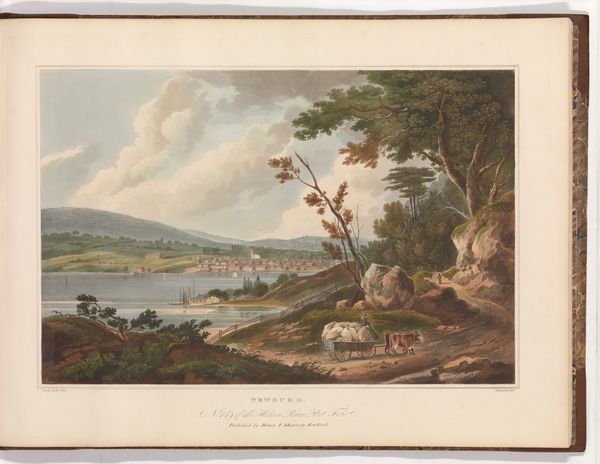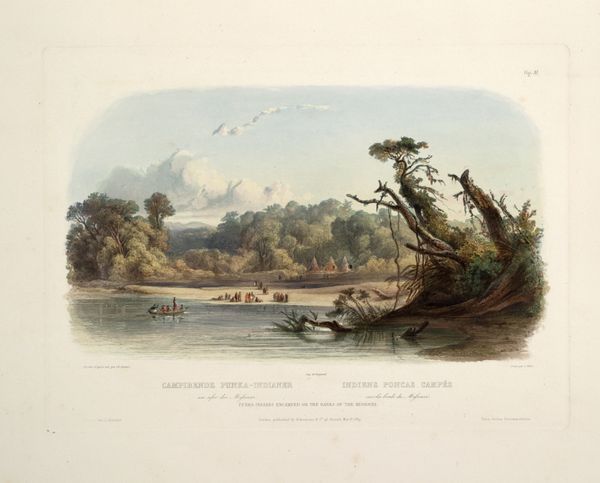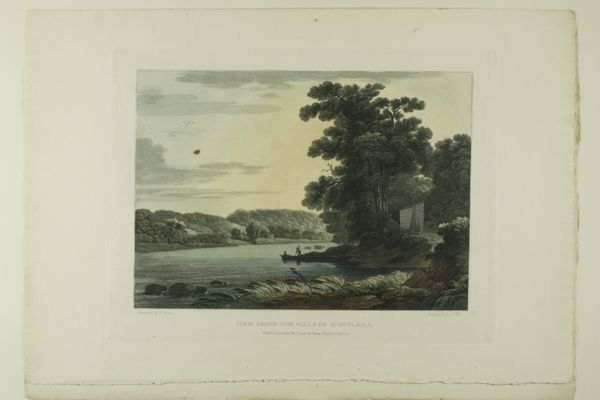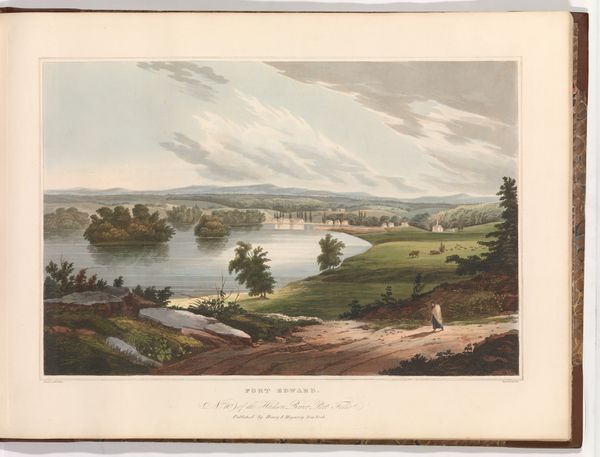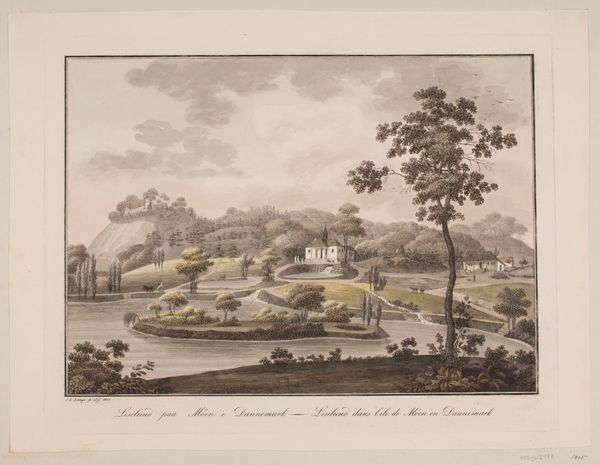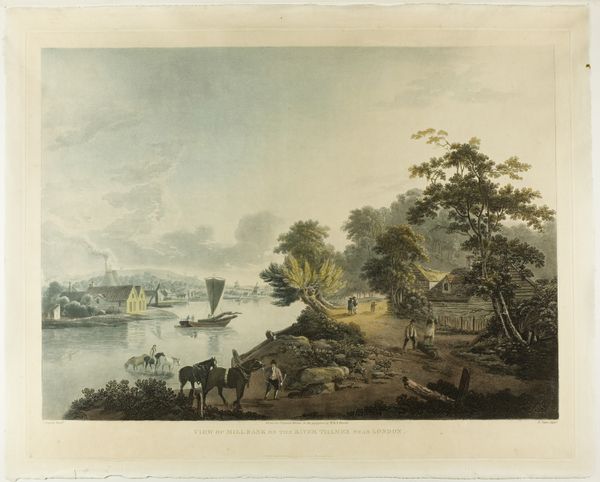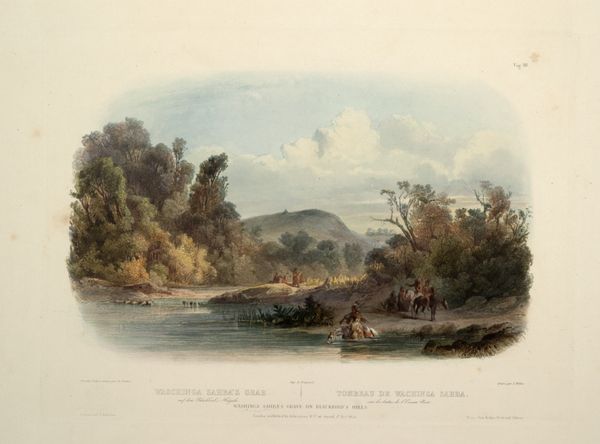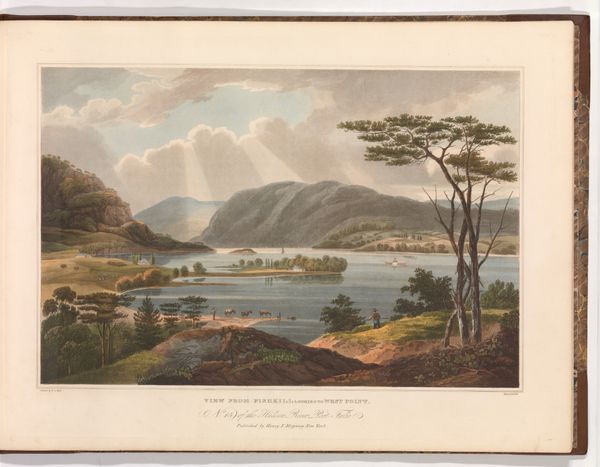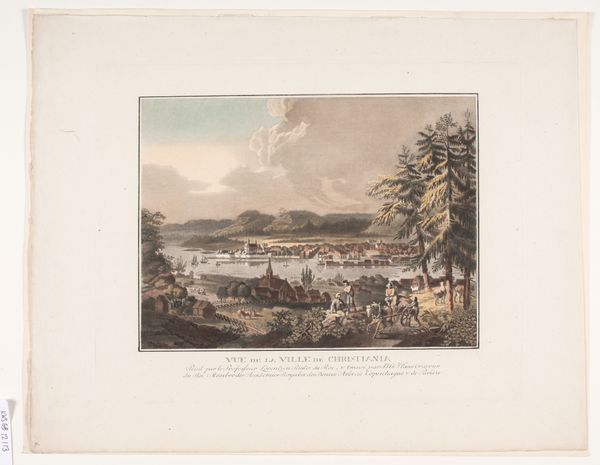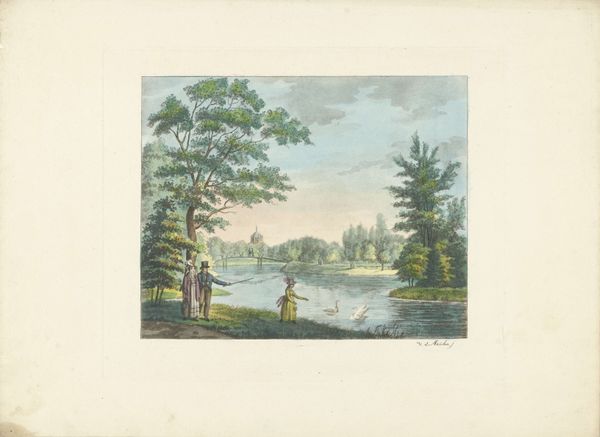
View Near Jessup's Landing (No. 3 of The Hudson River Portfolio) 1821 - 1822
0:00
0:00
Dimensions: Image: 14 1/16 x 20 3/16 in. (35.7 x 51.3 cm) Sheet: 19 x 24 1/2 in. (48.3 x 62.2 cm)
Copyright: Public Domain
Curator: This is "View Near Jessup's Landing," a watercolor print from John Rubens Smith’s “Hudson River Portfolio,” created between 1821 and 1822. Editor: It’s gentle. Not just the palette, but the curve of the river, the slope of the land... very easy on the eye. Though that gnarled tree in the foreground suggests some struggle against the elements. Curator: Indeed. Smith captures the Romantic ideal of the American landscape – a pastoral scene that hints at both the sublimity of nature and man's harmonious place within it. Notice how the lone figure walking into the woods emphasizes this feeling. It speaks to the enduring cultural fascination with westward expansion. Editor: But it’s also so carefully manufactured, isn’t it? It presents itself as a natural scene, yet it’s been reproduced. "Hudson River Portfolio"… Multiple prints would have been circulated, made with particular pigments, inks. Was it widely accessible? Who was buying this view? Curator: Access at the time would have been limited to the upper and middle classes. And the images offered a potent reminder of nature's grandeur but also promoted the concept of the picturesque as property, something to possess, reflecting evolving attitudes towards land ownership and its cultural associations. Editor: Property, certainly. And power. Think of the engravers, the paper makers, the distributors—the physical labor required to manifest Smith's vision. The means of production shape the image itself, the types of lines you get. And the image is far from some untouched wilderness, it seems populated; a farm is set near the curve of the water... It isn't entirely "wild" space. Curator: Very true. Beyond a serene landscape, Smith reveals an intersection of nature and enterprise; these carefully rendered scenes contributed to shaping American identity, a narrative of harmony and progress. Each symbol and scenic detail serves to underline those cultural values. Editor: It’s a tension – between the portrayed scene of apparent calm and the industrious activity underpinning its reproduction. Examining the material origins provides an insightful counterpoint to readings of manifest destiny and untamed frontiers. Curator: Absolutely. The image operates on many levels, then— a window into evolving ideals, material processes, and artistic legacies. Editor: A good reminder that "landscape" is never just "landscape.” It’s a nexus of production, perception, and, ultimately, power.
Comments
No comments
Be the first to comment and join the conversation on the ultimate creative platform.
